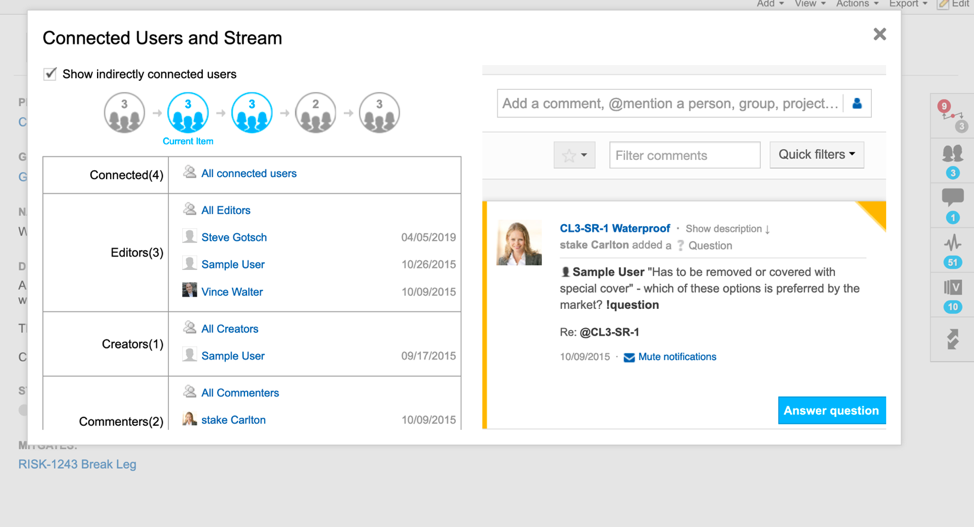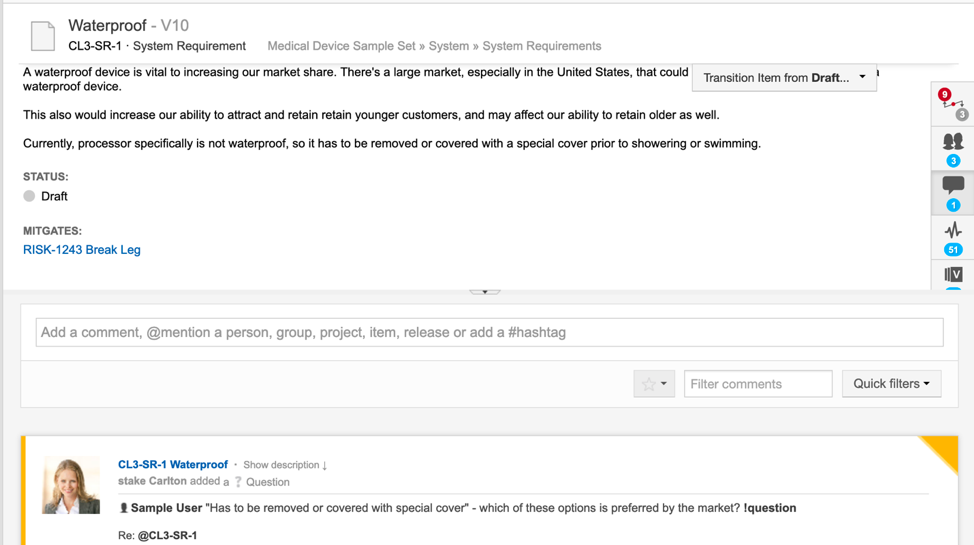This post is the first in a three-part series on traceability. Keep an eye out for the second two posts on how requirements traceability will be different in the 2020s, and lessons learned from 2010s Agile product development.
There are new software capabilities being developed every day keeping us dazzled with trend-driven analytics and massive data analysis. At the end of the day though, it’s humans that are still accountable for the product development decisions being made with or without cutting-edge analysis tools. Even with the advancement of automated analytics, decision-makers must still demand good information so they can truly own their choices in complex product development.
Making good decisions depends on the ability to see comprehensible information as change happens in real time, both within your team and throughout the system your product exists in. That’s where modern traceability comes in – it makes it possible to manage and respond to change in a systematic, auditable, confidence-enhancing way.
Rather than trying to prevent change (still impossible with our current technology for now…), here are three ways traceability has evolved to support the dynamic job of decision makers.
Evolution 1: Modern traceability can capture when you actually make a decision, in multiple formats from both formal and informal situations.
Decisions have varying levels of durability, and it’s not always obvious at the time what that level is. Sometimes you know at the time you’re making a final, consequential decision. Other times you make what you think is a temporary choice and you’re living with it 5-10+ years later. Given that uncertainty, having mechanisms to see when decisions are made (throughout the development process) is essential when products are expected to be maintained for years. We may need to move on quickly in the development process, but the record can live on for future context.
In Action: Formal decision processes such as gate reviews can be managed in tools like Jama Connect™ Review Center, making it easier to mark versions of requirements as signed-off and complete. Decisions that arise from less formal activities like comment threads on requirements can be tagged and referenced later to piece together thinking from the past.

Electronically sign-off on formal reviews using Jama Connect Review Center.
“Catching these traceability gaps would’ve probably taken hours or days in our old system, while with Jama, it became obvious in a matter of minutes.” Read how Jama Connect improved Össur’s traceability process.
Evolution 2: Modern traceability connects people to the context of what they’re working on as they go – not just globally or in a matrix after the fact.
Traceability gives people a (specific) reason to care when asking for input. It helps everyone know why they’re there. Rather than rely on sharing lengthy Word documents or running general meetings, precise outreach is possible with precise mapping of work items (including their owners and contributors) to each other.
In Action: Figure out who to direct questions to or notify by looking at interconnected people, not just the work items. This list can be automatically generated with Jama Connect’s connected users feature – so knowing who to contact won’t slow anyone down from having timely conversations.

See who’s related to each item with connected users.
Evolution 3: Traceability can show past decisions, because they’ve been captured all along.
Can you follow any thread of a question or item to how it got there and why? Knowing who made a decision, and what information *they* had access to is as important as the information itself. Your traceability is incomplete if you can’t piece that together. The faster the better. The responsible thing to do: Make the task of keeping useful records low friction. It doesn’t need to be forced behavior if it’s captured along the way as a biproduct of doing your job.
In Action: Building technical requirements directly from primary source materials, like high level market requirements, has multiple benefits. It simplifies the authoring process by having the downstream requirements writing right next to the source materials, so the translation step is that much easier. It also ensures that when something changes downstream, features like Jama Connect’s suspect links can show where those changes impact other work in real time – no need to wait for an event to reconcile the original goals with what was built.

View the context of how decisions were made with commenting in single-item view.
Traceability can be used to support more genuine accountability. Without robust, modern traceability tools accountability is incomplete — past decisions can’t easily be seen, learned from, or built upon when new choices are made. It’s much harder to legitimately hold someone accountable when they’re working in the dark.
To go deeper on the topic of traceability, and how Jama Connect helps fast track the process, check out our eBook, “The Jama Software Guide to Requirements Traceability.”
